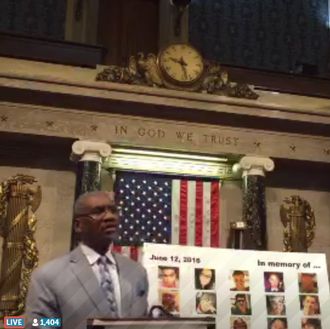
Yesterday, in a bit of bad timing, I published a piece called “What is live video for?” I asked this question because it’s fairly obvious that live video — currently being pushed as a new feature and content category by Twitter, Tumblr, Musical.ly, and, most prominently, Facebook, which has spent $50 million to encourage publishers to create live content — is a poor format for … almost everything.
And then as soon as my post was published, I got my answer. Democratic members of the House of Representatives held a sit-in in the chamber; House rules require the cameras, which broadcast proceedings to channels like C-SPAN, to be off when not in session. In turn, Democrats began broadcasting their effort to hold a vote on gun control on platforms like Periscope and Facebook Live. C-SPAN used those feeds in lieu of the official House platform.
This was an incredibly compelling use of live video. But it’s also a very specific kind of event — exactly the kind for which a service like Facebook Live is well-suited. For one thing, it’s breaking news, so the fact that it’s live is pressing and important. The filming is being done by individual people at the site of the news event, rather than by bloggers press-ganged into awkward live discussions. It concerns a lengthy, ongoing, wait-and-watch event — one that different viewers can tune into hours apart and still have a good understanding of what’s happening. It does not require your rapt attention, but it will hold it. In a very, very vague sense, this is the legitimate, important, legislative version of BuzzFeed wrapping rubber bands around a watermelon.
But it’s important to recognize that “congressional representatives breaking procedure to protest for a vote on gun control” is not a replicable event. It’s not something that digital publishers could create themselves, nor is it something on which they can capitalize, or even that they can predict.
At some point, the sit-in will end, and when it does, viewership and social media chatter will spike as it reaches its conclusion. Legislative protest is great for live video — it practically handed Wendy Davis the democratic nomination for Texas governor a couple of years ago — but it’s not imitable by businesses that rely on growing their social-media brand. Which basically means there are a bunch of people in conference rooms in New York right now trying to figure out how to reverse engineer this sort of event for their gain.





























